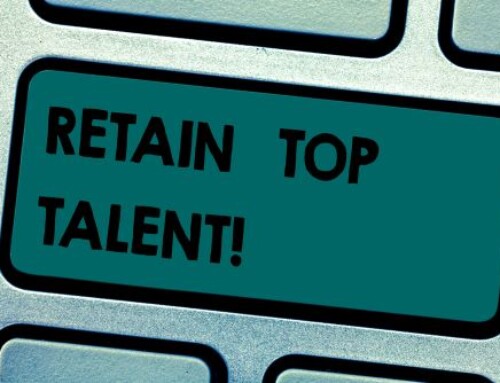While making your employee recognition program a priority may seem unrealistic given your already endless priority list, doing so delivers a host of very attractive benefits:
- Top-tier recognition programs allow organizations to see their ROI firsthand during the process of recognizing excellent work.
- Best-in-class companies are 21% more likely to view recognition as extremely valuable for driving employee performance.1
- Best-in-class businesses are 22% more likely to consider recognition programs to be a critical component of their success.1
That said, developing effective recognition programs that engage employees is not easy. Make sure you avoid the following traits when developing yours:
- Short-term versus long-term
- A lack of encouragement to be creative and take risks
- Discouraging teamwork
- Imposing a limit on employee performance
Now that you know what not to do, we are going to share with you strategies for a successful employee recognition program.
1. Recognize Specific Contributions
It is imperative to call out specific actions when recognizing employees. Why? Doing so makes it clear to employees exactly what they did to get rewarded in this way. You will give them a road map for reference when they handle future projects and situations. Plus, specific recognition is seen as more sincere than a vague “Good job.”
PRO-TIP: If you really want to make it clear why an employee is being rewarded, use measurable metrics. For example, “Jane Paulson was able to grow sales in the Los Angeles area by a staggering 35% in the last year. Congratulations Jane!” -OR- “Phil Andrews provided feedback and helped our engineering team refine new technology that cut production costs by 15% saving our company over $3.5 million dollars this year, and gave us a huge market advantage.”
2. Make Recognition Inclusive
It is inevitable at every workplace that certain employees consistently shine. While it may be tempting and feel natural to recognize these employees frequently, doing so can breed a sense of resentment and resignation among those employees who rarely receive recognition. You can avoid this scenario by diversifying the parties responsible for giving recognition. Rotating the responsibility each time works, as well, although this strategy may entail a bit more time to get everyone in the loop.
PRO-TIP: Consider rotating members of a recognition committee, or providing options that are focused more than just on performance. For example: Many key employees may not be shining stars, but are critical to helping polish those that do. Look to highlight the accomplishments of supporting team members such as those who provide great ideas that that lead to improved productivity, greater efficiencies, savings, finding new markets or key relationships, etc.
3. Give Recognition Promptly
If you wait too long after a positive behavior or performance to recognize an employee, the connection between their contribution and the recognition they receive for it will start to fade. This diminishes the cause-and-effect reaction that is so important for motivating employees.
PRO-TIP: Use a combination of short and long term rewards for recognition. Use bigger reward such as travel for long term objectives but keep the momentum going, as well as develop a culture of recognition by rewarding short term contributions. A day off with pay, the option for “play” such a laser tag with 4 friends or family, etc.
4. Recognize Employees Publicly
In an ideal world, private recognition you hand out quietly to employees would be sufficient. In the real world, public recognition offers major benefits including making the entire organization aware of the work being done, sharing solutions that recipients used and giving fellow employees the chance to give peer-to-peer recognition.
PRO-TIP: While recognizing an employee for great work before peers is a great start, use newsletters as well as your website to make sure that vendor partners, customers, etc. also are aware that you have a culture of recognition. Remember, people like working with organizations that have a positive environment.
5. Provide Recognition on a Regular Basis
People’s attention spans are short, especially in the digital age. If you let too much time pass between the times you provide positive feedback to chosen employees, you risk them becoming disengaged. Make it a point to recognize selected employees at least once per month, if not weekly.
PRO-TIP: Whether it’s a casual Friday which includes the last hour of the day for recognizing employees, or Wednesdays to spur the motivation throughout the week find a consistent time when employees can expect to be honored. The key is to keep a pace that you can maintain long-term. It’s better to spread out recognition celebrations monthly and keep the same pace than to start out doing it weekly, get sidetracked and let it fizzle out and become forgotten.
6. Stress How Contribution Align with Company Values
Strong company culture is vital for the long-term success of any organization and values are one of the tenets of company culture. Tying employee actions to this all-important foundation imbues these contributions with meaning and encourages employees to work toward a common goal.
PRO-TIP: Use employee reviews as well as recognition programs to tie your company culture and value system together. Use metric objectives. Be clear about goals and expectations and use phrases that workers understand. This way when employees exceed expectations and are rewarded it sends a message to all workers why the recognition was earned and given.
Developing and maintaining an effective employee recognition program should be a priority, not an afterthought. By following the six strategies outlined above, you will ensure that your program is successful.
For more information about how Gavel International can help your organization through outsourced meeting planning, event and travel incentive programs, contact us.
SOURCES:
- Take an International Culinary Journey in Glamorous Miami, Florida - June 17, 2024
- The Psychology Behind Planning Effective Offsite Meetings - May 6, 2024
- How These 3 Factors Create Powerful Experiences During Incentive Trips - April 29, 2024







